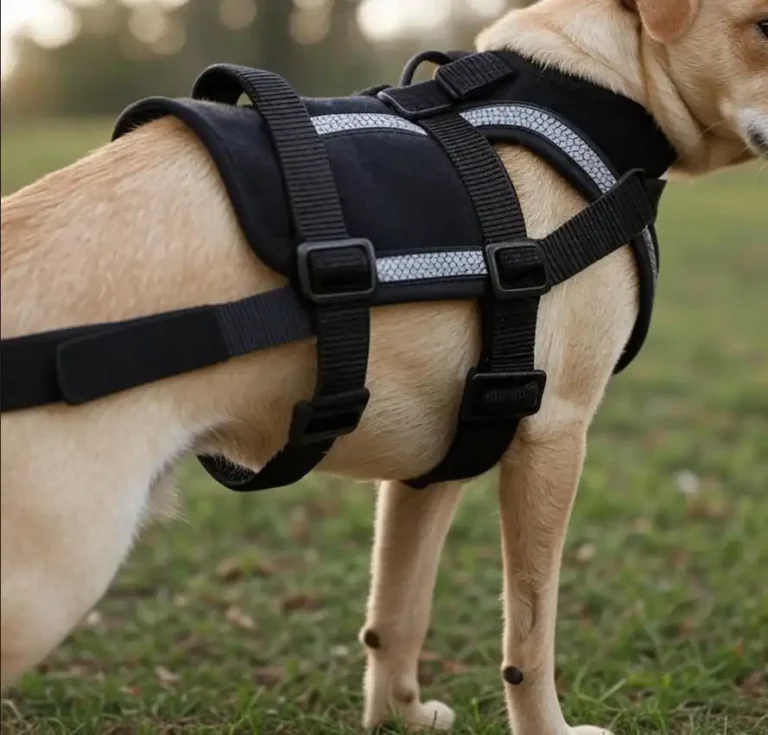Choosing the Right Harness or Collar for Your Dog
There are a variety of harnesses and collars available on the market for dogs, and it cannot be easy to decide which one is right for your pet. The type of harness or collar you choose will depend on several factors, including your dog’s size, breed, and activity level.
If you have a small dog or a toy breed, a harness or collar with lightweight material is ideal. For larger dogs, a heavier-duty harness or collar is necessary. And for dogs who love to run and play, a comfortable and durable harness or collar is a must.
When choosing a harness or collar for your dog, be sure to take into account your pet’s individual needs. With a bit of research, you can find the perfect harness or collar for your furry friend.
Entering an animal shop, a wide range of choices is offered to us in terms of necklace, harness or other tool to walk pony. How to choose the one that best suits your dog properly on a leash?
What about choke collars, mesh or electric?
When choosing the right type of collar for your dog, deciding between a choke collar, mesh, or electric can be challenging. All three have pros and cons, so it’s essential to weigh all your options before deciding. Here’s a quick rundown of each type of collar to help you make the best choice for your pup.
Choke collars are popular for many dog owners because they’re effective at controlling dogs who pull on their leash. However, using these collars correctly is essential to avoid hurting your dog. Mesh collars are a more comfortable option for dogs who don’t like wearing a tight collar and are less likely to cause accidental injury. Electric collars are a training tool that can be useful for teaching dogs commands, but they should only be used under the supervision of a qualified trainer.
The choke collar (necklace or chocker):
No Pull Dog Collar, Dog Training Collar with Comfort Tips and Quick Release Snap Buckle for Small Medium Large Dogs (Large,4mm,23.6-Inch,18-22″ Neck, Black)
As its name suggests, this endless sliding dog collar strangles the dog. It was originally a traditional training tool that was only used when training the dog by professional punishment and not on a daily walk. It only works if the dog is punished or strangled hard enough; enough pain is inflicted on him so that he does not reproduce a behavior considered undesirable. This method is to be avoided because not only it inflicts pain but also it does not teach the dog what he should do, he just teaches him to avoid pain.
The spades necklace (the prong):
Supet Dog Prong Collar, Adjustable Dog Training Collar with Quick Release Buckle for Small Medium Large Dogs(Packed with One Extra Links)
It is actually a necklace choker, provided with pikes turned towards the neck of the dog for a more pronounced effect. It is used in much the same way and has the same harmful effects on the dog both behaviorally and physically.
These two collars have physical consequences that can be disastrous, the scientific data is still in progress but it would be eye problems, the esophagus or the trachea until neurological problems due to strangulation.
The electric collar (the e-collar):
Bousnic Dog Shock Collar for 2 Dogs – ( 8-120lbs) Waterproof Rechargeable Electric Dog Training Collar with Remote for Small Medium Large Dogs with Beep Vibration Safe Shock Modes
This necklace does exactly what its name says: it delivers electric shocks to the dog. There are several types of necklaces, the one that you control with a joystick and the automatic that triggers when the dog barks for example. This necklace is illegal in many parts of the world and many associations are fighting to ban its use considered inhumane.
No matter which type of collar you choose, the most important thing is to use it safely and appropriately for your dog’s individual needs.
Why not use these collars with your dog?
In addition to sore the dog, they create fear, anxiety, acquired helplessness, but also bad associations; for example if I strangle or zap my dog that barks after another dog, the association that does it does not necessarily stop barking but: ‘when I see a dog, I hurt’. The consequences are multiple: my dog is afraid of other dogs, my dog goes out in front of other dogs, my dog wants to attack other dogs: all these results are undesirable in addition to undermining the relationship you have with your companion, that’s why, among other things, we do not recommend them.
Better tools to train your dog:
Whether you’re looking for a new leash or collar, or something more advanced like an electronic training collar, we’ve got you covered. We’ll also share some tips on using these tools effectively to get the most out of your training sessions. So if you’re ready to learn more about better ways to train your dog, read on!
The flat necklace:
LovelyDog Embroidered Personalized Dog ID Collar, 4 Adjustable Sizes: Extra-Small, Small, Medium, Large with Dog Name Phone#, Reflective Pet Pink Dog Collars for Boy & Girl Dogs, X XS M L XL
This is the most popular necklace but can, in itself, strangle the dog too if it pulls. Learning to walk on a leash is necessary to avoid the physical damage it can cause due to strangulation, calling a canine educator is necessary for a walk in flat collar without disastrous consequences.
It is often used to put the dog’s medals for example; it can be a beautiful fashion accessory too!
The martingale necklace:
Diamond Dog Gold Chain Collar – 10mm Shiny Luxury Dog Necklace – Fancy Gold Dog Chain with Sparkly Crystal Bling, Strong Links & Durable Clasp – Doggy Fashion Accessories
It is traditionally used for dogs that have heads smaller than their necks (greyhounds for example). The martingale should never be used as a choke, but adjusted like a flat collar. It has the same effects as the latter, other than the dog cannot leave it if he backs down by lowering his head. Shelters usually use this type of collar to avoid losing their dog.
The halti (the harness of head):
The Company of Animals HALTI Headcollar, Black, 3-Size, Model Number: 13200, Size 3 (Pack of 1)
This type of head harness may be useful in some cases, but it must be used with care. Although not all scientific data is counted, the halti could damage your dog’s cervix during a sudden shock (lashing, sudden blow). What we often see are dogs scratching themselves to remove it (on the ground, against people’s legs).
Indeed, wearing a head harness should be an apprenticeship (how to wear it, wear it and love to wear it). A qualified dog trainer can help you introduce your dog to avoid discomfort.
The different types of dog harness
Several types of harnesses are available, the one with a tie on the back, the one for the car, that of canicross, the one with a frontal attachment or even that which encloses the dog when it pulls.
Harnesses that grip the dog
BARKBAY No Pull Dog Harness Front Clip Heavy Duty Reflective Easy Control Handle for Large Dog Walking(Black,L)
They are to be avoided because they have the same effect as a choke collar and the friction may damage the epidermis of your companion.
Harnesses tied in the back
Gooby Escape Free Easy Fit Harness – Turquoise, Small – No Pull Step-in Patented Small Dog Harness with Quick Release Buckle – Perfect On The Go No Pull Harness for Small Dogs or Medium Dog Harness
Just like canicross harnesses, they allow your dog a good forward pull, it is possible that he pulls more on a leash, a course is in order!
When choosing your harness, take the time to adjust it to your dog to avoid any friction and / or potential injury. It should be noted that some dogs learn to let go of this type of harness by moving back and down their heads!
Harnesses with frontal attachment
BARKBAY No Pull Dog Harness Large Step in Reflective Dog Harness with Front Clip and Easy Control Handle for Walking Training Running with ID tag Pocket(Ocean Blue,L)
They allow you to have easier control because by pulling, the dog naturally turns towards you. On the other hand, some dogs learn to pull anyway, so an educator can help you teach your companion to walk on a leash.
If your dog has short hair, prefer a padded model to avoid scratches.
In summary:
Choosing a good walking tool is essential for the comfort and well-being of your dog and yours as well. It is good to remember that it is not natural for a dog to walk on a leash and that learning is necessary for a pleasant walk!
Flat collars and harnesses (except those that grip the dog) are preferable to coercive tools such as chokers or spikes. If your dog pulls a lot, a harness with a frontal attachment and a little workout should allow you to relieve the joints of your hands during walks! The brands Canine Equipment, Ruff wear and Easy-Walk make good models.
An educator can help you get around the situation quickly so that you can enjoy a dog-friendly ride while getting you to the right tool for you.
















